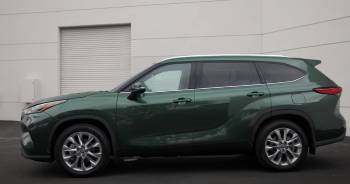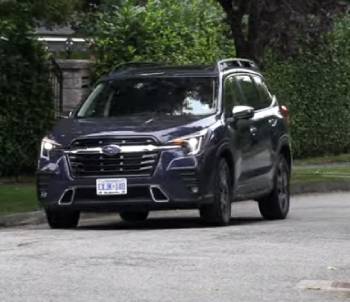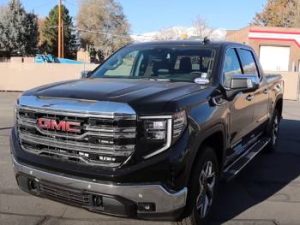The SUV market is chock-full of options for discerning drivers. Among the top contenders are the Toyota Highlander and the Subaru Ascent. Whether you’re a parent hauling kids to soccer practice or an adventure junkie looking for the next off-road challenge, both these SUVs have something to offer.
Let’s break down the nitty-gritty, taking the wheel from a real user’s perspective.
A Brief Comparison Table
| Feature/Aspect | Toyota Highlander | Subaru Ascent |
| Engine | V6 (295hp) / Hybrid (243hp) | Turbocharged Four-Cylinder (260hp) |
| Drivetrain | FWD (Standard), AWD (Optional) | AWD (Standard) |
| Fuel Efficiency (City) | 21 mpg / Hybrid (36 mpg) | 21 mpg |
| Fuel Efficiency (Highway) | 29 mpg / Hybrid (36 mpg) | 27 mpg |
| Seating Capacity | Up to 8 | Up to 8 |
| Infotainment Screen | 8-inch / 12.3-inch (optional) | 6.5-inch / 8-inch (higher trims) |
| Safety Suite | Toyota Safety Sense 2.0 | EyeSight Driver Assist Technology |
Toyota Highlander Pros:

- Brand Reputation:
Toyota, for years, has built its brand on reliability and durability. The Highlander has consistently benefited from this reputation, standing out as a family SUV that will last for years.
- Hybrid Option:
Environmentally conscious? The Highlander offers a hybrid variant, allowing for better fuel economy and a smaller carbon footprint.
- Upscale Interior:
With its plush seating and high-quality materials, the Highlander offers a touch of luxury without the luxury price tag.
- Advanced Safety Features:
Toyota Safety Sense, a suite of advanced safety technologies, comes standard, ensuring peace of mind on the road.
Toyota Highlander Cons:
- Less Roomy Third Row:
While it can seat adults, the third-row seating can feel a bit cramped compared to some competitors.
- Price:
Depending on the trim and additional features, the Highlander can become pricey.
Also Read: Differences Between Green And Gray Tint Privacy.
Subaru Ascent Pros:

- All-Wheel Drive (AWD):
Subaru’s Symmetrical All-Wheel Drive comes standard, making it a dream for off-road enthusiasts and those who live in areas with challenging weather conditions.
- Spacious Interior:
The Ascent offers a generous interior space, particularly in the third row, ensuring comfort for all passengers.
- Towing Capacity:
If you have a boat or a camper, the Ascent has got your back with its impressive towing capacity.
- Impressive Tech Suite:
Subaru’s STARLINK multimedia system is user-friendly and feature-rich, making every drive enjoyable.
Subaru Ascent Cons:
- Fuel Efficiency:
The Ascent, especially given its standard AWD, might consume more fuel than some of its competitors.
- Brand Perception:
Subaru has a niche following. However, some might not see it as prestigious as other brands.
Also Read: Are Alzor Wheels Worth It?
Key Differences Between the Toyota Highlander and Subaru Ascent
While both Toyota Highlander and Subaru Ascent have garnered attention in the mid-size SUV market, there are noteworthy differences between the two that could sway a buyer’s decision.
Let’s delve deep into what sets them apart.
Power and Performance:
Toyota Highlander:
The Highlander generally comes with a V6 engine, boasting about 295 horsepower. This provides a substantial amount of power, suitable for both city driving and highway overtaking. The hybrid variant offers a combined 243 horsepower, prioritizing fuel efficiency over raw power.
Subaru Ascent:
Powered by a turbocharged four-cylinder engine, the Ascent offers around 260 horsepower. While slightly lower than the Highlander, the difference isn’t always evident in regular driving conditions. The turbocharging ensures the Ascent remains responsive.
Drivetrain:
Toyota Highlander:
Most Highlander models come with a front-wheel-drive (FWD) standard, with all-wheel drive (AWD) as an option. This is typical of many SUVs in this class, offering the balance between fuel efficiency (FWD) and performance (AWD).
Subaru Ascent:
One of the hallmark features of Subaru vehicles is their Symmetrical All-Wheel Drive, and the Ascent is no exception. Every Ascent model comes standard with AWD, catering to those who often drive in challenging conditions or just want the enhanced traction AWD offers.
Fuel Efficiency:
Toyota Highlander:
The Highlander’s V6 engine gets an estimated 21 mpg in the city and 29 mpg on the highway, which is commendable for its class. The hybrid variant shines with about 36 mpg in both city and highway, making it a top pick for those prioritizing fuel economy.
Subaru Ascent:
Given its standard AWD, the Ascent’s fuel efficiency is lower but still respectable with around 21 mpg in the city and 27 mpg on the highway.
Interior Space and Comfort:
Toyota Highlander:
The Highlander offers a plush interior with a focus on comfort. It can accommodate up to eight passengers, but the third-row seating might feel cramped for adults on longer rides.
Subaru Ascent:
Subaru made sure that the Ascent stands out when it comes to interior spaciousness. It can comfortably seat up to eight passengers, with a third row that’s more generous in space compared to the Highlander.
Infotainment and Features:
Toyota Highlander:
Toyota’s infotainment system, embedded in the Highlander, comes with an 8-inch touch screen, Apple CarPlay, Android Auto, a Wi-Fi hotspot, and a six-speaker audio system. Higher trims or additional packages might offer a larger 12.3-inch screen and more premium audio options.
Subaru Ascent:
Subaru’s STARLINK system is both intuitive and feature-packed. With a standard 6.5-inch touch screen, Apple CarPlay, Android Auto, and multiple USB ports, the Ascent offers a tech-rich driving experience. Premium models come with an 8-inch screen and additional features.
Safety:
Toyota Highlander:
Toyota Safety Sense 2.0, a suite of advanced safety features, comes standard. This includes adaptive cruise control, lane departure warning, and pre-collision system with pedestrian detection.
Subaru Ascent:
Subaru’s EyeSight Driver Assist Technology is standard across all Ascent trims. It offers adaptive cruise control, pre-collision braking, and lane departure warning, among others.
Read More: About Comparison Between Mercedes GLE 450 and GLE 350
Final Thoughts:
Both SUVs bring a unique set of offerings to the table. It’s crucial for buyers to identify what matters most to them – be it fuel efficiency, space, brand reputation, or specific features.
Both Highlander and Ascent are well-rounded contenders in the mid-size SUV space.



